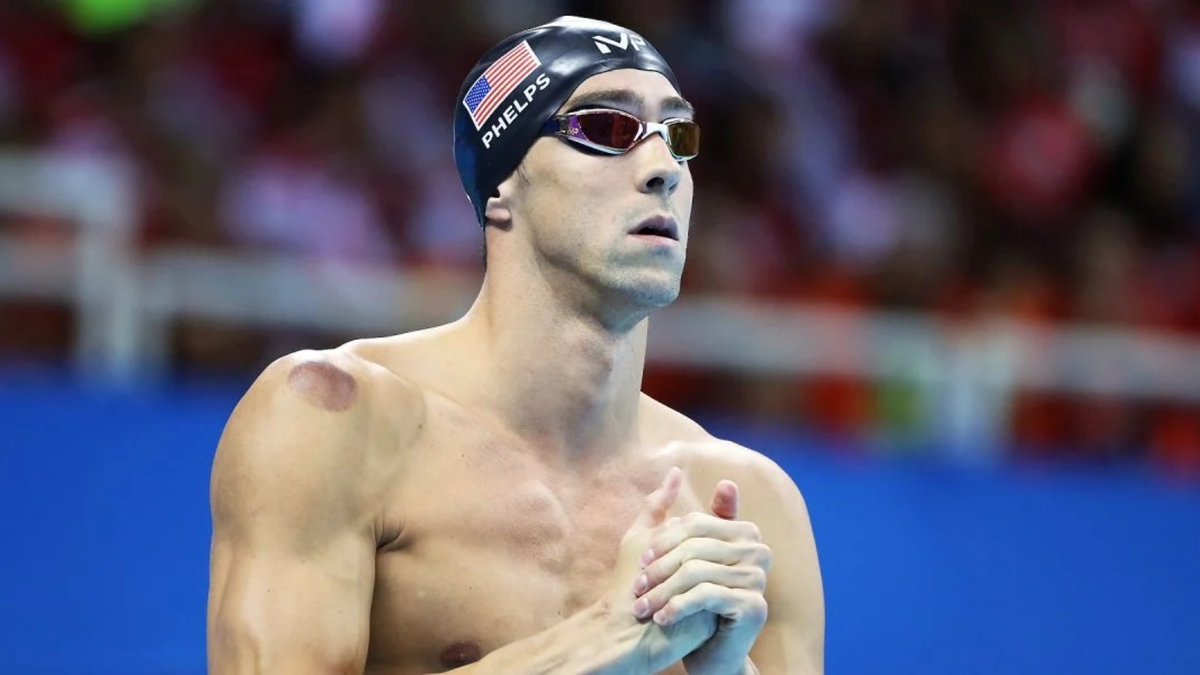

Remember Michael Phelps winning his 19th Olympic gold medal at the Olympic Aquatics Stadium in 2016? You might be scratching your head. That’s quite normal, as in five Olympic Games (from 2000 Sydney to 2016 Rio), the Flying Fish grabbed a whopping 28 medals, 23 of which were gold. But if you’re told that it was the same event where Michael Phelps dived into the pool with big red marks on his skin, you may find it easier to remember. Such were those patches! Since then, a lot of debate has swirled around the communities, asking the reason behind the appearance of those marks.
Watch What’s Trending Now!
Beating around the bush has become common when trying to find the reason for such marks. Nonetheless, the interest and debate have not diminished. Now, with the Paris Olympics just 50 days away, let’s discuss it.
ADVERTISEMENT
Are the big red patches because of untreated injuries?
In the Rio Olympics, the large red dots on athletes were mostly visible in the American camp. Besides Michael Phelps, gymnast Alex Naddour also had such patches on his shoulder and back. Alex claimed that they were the result of a cupping technique applied to his body to provide relief for his sore muscles. Praising the technique, the 25-year-old gymnast said to the USA Today, “That’s been the secret that I have had through this year that keeps me healthy. It’s been better than any money I’ve spent on anything else.”Ultimately, the gymnast admitted that the technique had impressed the entire gymnastics team, and the members regularly used it to relieve soreness. So, what is the process for carrying out this technique?

ADVERTISEMENT
Mainly sharing its roots with China, the process involves rubbing the sore skin with something flammable like alcohol or camphor and then heating a small inverted cup by lighting a match inside it. After the match goes out, the heated cup is placed over the sore skin. The active heat works on the flammable layer and adds pressure to the skin. As a result, the skin starts to pull away. With continuous heating for 5-15 minutes, the blood vessels expand, and the capillaries on the surface break, causing redness. However, the process stimulates blood flow, which helps wash away lactic acid in the muscles. This lactic acid buildup is what causes soreness. From that perspective, cupping therapy has become a widely accepted remedy for athletes and swimmers. However, the process has not yet received approval from medical authorities.
ADVERTISEMENT
Yet, that hardly mattered when Michael Phelps’ personal strength and conditioning coach, Keenan Robinson, introduced him to this technique in 2014. Later, the Baltimore Bullet resorted to cupping therapy several times, specifically in emergencies. “I’ve done cupping for a while before meets,” remained his boastful comment. But does USA Swimming allow it without giving much thinking?
Top Stories
Sources: John Harbaugh Wasn’t Fired, Left Ravens After Refusing Major Staff Changes

Andy Reid Fires Coach In Attempt to Rebuild Staff After Receiving HC Requests For Chiefs’ Coordinators

Three Arrested in Cleveland For Burglary at Shedeur Sanders’ Home

Mike McDaniel Contract: How Much Do Miami Dolphins Owe the Fired Coach?

Michael Jordan’s Bulls Teammate, Basketball Leagues Founder Dies at 68

Bill Cowher’s Strong Message to Steelers on Firing Mike Tomlin After HC’s Blunt Playoff Message

Will cupping therapy enter the Paris Olympics?
After Michael Phelps’ extraordinary performance in the 4x100m freestyle relay final with red patches on his skin, a news anchor on Russian TV found something ‘fishy.’ The anchor complained that the marks could be the result of taking the banned performance-enhancing drug meldonium. However, the IOC did not pay any heed to this complaint, as they had already legalized the cupping technique using suction cups, which is still permitted. This technique is different from the aforementioned process.
ADVERTISEMENT
Being a user of such therapy, swimmer Kayla Hutsell described the process, “Basically, the athletic trainers use big cups and suck the air out of them, which in turn sucks our skin up into the cup.” It helps in the capillaries and in keeping the fascia, a layer in between the surface of the muscle, lubricated. That part was highlighted in Kevin Rindall’s comment as well.
Having a past with USA Swimming, Kevin stated that the process helps to keep the fascia and muscle apart, allowing for smoother motion after applying the cupping technique. For the time being, the process has helped swimmers, gymnasts, and other athletes. In the Paris Olympics, don’t be worried if you notice one of these red dots on Katie Ledecky’s shoulders or Sha’Carri Richardson’s back. It could be the result of cupping therapy.
ADVERTISEMENT
ADVERTISEMENT
ADVERTISEMENT

